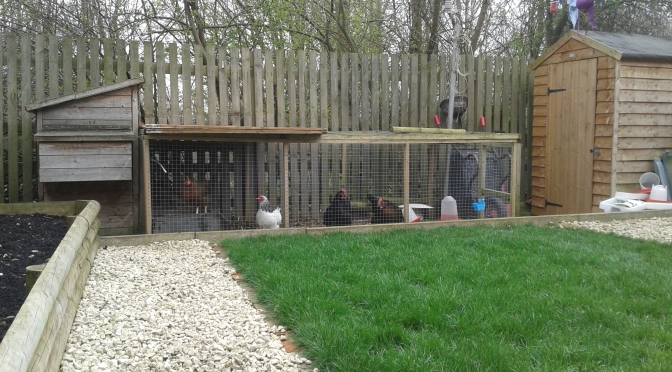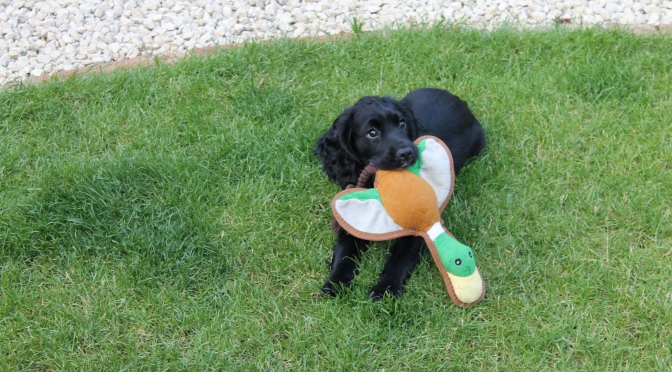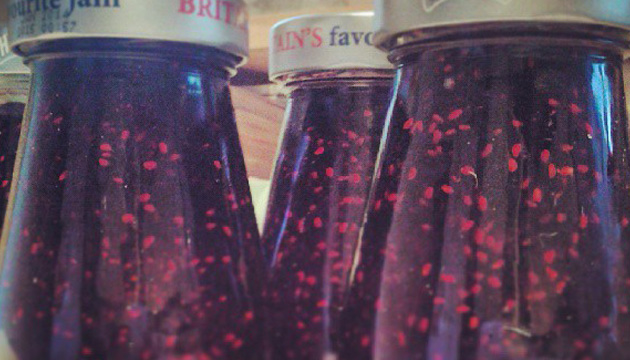Courgette Spaghetti
Just a quick and simple post to showcase one paleo substitute that we love!
Making courgette spaghetti is so easy, we simply use a julienne peeler (although lots of people have and use the vegetable spiralizer) – put a little olive or coconut oil in a wok and stirfry for 5 mins for perfect spaghetti!
Keeping Chickens: The Truth
I’ve been keeping chickens for about 18 months now, I don’t consider my chickens to be ‘pets’, but I enjoy seeing them potter about in the garden, enjoy the (occasional) benefit of fresh eggs and feel a sense of satisfaction knowing that they receive a higher level of welfare than many chickens kept for mass egg production. As a ‘newbie’ to chicken keeping did ample research before getting our first birds. During this time I read lots of forum posts, joined several Facebook groups and quizzed friends that already kept chickens. It’s safe to say that what I read or was told was only half the story, so I thought I’d put together a brief FAQ post based on our experience for anyone looking to start keeping chickens for the first time:
Q: I like the idea of fresh eggs, rather than getting shop bought, shall I keep chickens?
A: In short, my answer to this question would be no! If you like the idea of keeping chickens for egg production, there are several things you should know first. As a general rule, the cost of keeping chickens is far greater than that of buying eggs (depending of course on how many eggs you buy in a week). So first, the overall outlay, depending on your garden size, you’ll need a chicken run and coop, secure and water tight (ours is the traditional static wooden type), and you’ll need to decide on whether this will be static or whether you will move it regularly around the garden for a fresher ‘floor’ for your chickens. We went for a static type because we have a small garden with minimal lawn space. You’ll need somewhere secure, water tight and if possible mouse/rat proof for the chickens food and bedding – we invested in a second shed at the bottom of our garden to house these bits, (as well as our gardening bits). You’ll also need a feeder and water drinker (size will depend on how many hens you plan to keep), and my advice would be to raise the water drinker at least off the floor, from my experience, chickens like to scratch around, and depending on what is on the floor of your run, much of this may end up in their water!
You also need to consider running costs, we have 6 hens, a mixture of larger and smaller breeds, and they work their way through a 20kg bag of food in approx. 1 month, they also need regular access to grit, and you may want to treat them to corn. They’ll also need bedding in the coop and nesting box, which will need changing regularly (every few days at least). You may also want to buy specialised disinfectants, mite/lice powder (because they do get them!), and a decent wormer (we use Flubenvet).
Keeping chickens, much like any other animal is a commitment and a responsibility – it might sound like I am stating the obvious, but it’s important to consider that you are not just buying egg laying machines! They will access to fresh food and water daily, and clean environment to live in – 365 days a year, so when it’s freezing outside you’ll need to be out defrosting their water, and when it’s blowing a gale they still need cleaning out – just remember this is no different from buying a rabbit or Guinea pig in that sense!
Q: What shall I put on the floor of my chicken run
This is one question that I really struggled with an answer for when doing my own research, and I’m still not sure we have the right solution now. If you plan to have a static run (chickens are incredibly messy!!), then you will read various suggestions about what to put on the base of the run, if like us your run doesn’t have a roof then consider that whatever you put in the base during the winter isn’t going to look pretty. Natural woodchip looks great – for about 2 weeks, but once the hens have bedded it down and done their business in it, as well as it getting rained on it will start to smell and look messy, it will need raking regularly, disinfecting and topping up every few months – we’ve just gone down this route, and admittedly I’m not convinced it’s the best way forward. Before that our chickens were on decorative gravel/stones (not too small like pea gravel because they’d eat it), and this worked really well initially, we could hose it down and keep it clean, but in time it will bed down, bedding from the coop spills in and you end up with a bit of a mess – admittedly it did drain well. We’ve since put woodchip on the top of the stone, but it’s already looking tired and due for a top up. An element of trial and error here, and I would probably recommend a roof on your run if possible!
Q: What bedding shall I use?
This is essentially down to you, cost and what works for you – you may want to use the chicken manure for your garden. We use a combination of Dengie Fresh Bed which is fab, smells really fresh and keeps them clean and dry and hay – the hay is for the nesting box only and works better thsan straw for cleaning out because it lifts out as one clump.
Q: Should I free-range my hens?
This is again entirely up to you – we don’t tend to free-range our hens for several reasons; they scratch up the gravel and bark in the raised beds, if we have veg planted in the raised beds they pull it up and eat it, they poo everywhere and the dog chases them! If you have a smallish garden, and one you’re proud of, I would suggest that you ‘free-range’ your hens occasionally (as we do), whilst keeping an eye on them. If you’re lucky enough to have a big garden and you’re not concerned about their slightly destructive nature then it is a nice sight to see them pecking about in the garden, just ensure they are shut away at night for their own safety. For all of you out there that say ‘chickens are great they keep the weeds down’ – yes they do, but they do also eat the green bits in the garden you perhaps don’t want them to eat, and they do dig and kick the ground about – you’ve been warned! Also be aware that although they don’t fly, chickens do have wings and they are capable of making a bid for freedom, so when you buy your hens do ask about how to clip their wings!
Q: What shall I feed my chickens?
Based on my own recommendations, we give our chickens adlib access to Spillers Layers Pellets (they are the cheapest brand at our local shop), as well as access to grit and fresh water all day, they do have a treat of mixed corn several days a week – I usually throw this down to encourage the natural behaviour of pecking, although some advice to keep their food off the floor for hygiene reasons. They can also eat much of your fruit and veg off cuts – just ensure you do some research on the bits that aren’t so good for them!
Q: Are they noisy?
Yes! I do wish I had read more about this before buying our hens – it’s not just cockerels that make noise. Our hens tend to be quieter in the winter and when they have stopped or significantly reduced the amount they are laying, but come Spring and Summer from 5am in the morning they let all the neighbours know they are there – as yet we have been fortunate that no one has complained, but they’re not quiet birds! They make noise when they’ve laid, they make noise if under threat (local cats in the garden), and when they are hungry!
There are many more questions surrounding chicken keeping, involving their general health, and I would advise doing plenty of reading about all of this before committing, however, it’s not all doom and gloom, chickens are good fun and it never gets old finding eggs in the nesting box!
The True Value of Social Media
One of the most common problems I find as a social mediator is reassuring the client that there is true value in what they’re doing when it comes to their social media activities and content marketing strategy. For many SME’s there is a realisation that they should be active on social media, but the understanding of why, (what and how) is often limited.
For many companies, particularly B2B (but not limited to) the need to see a direct monetary ROI or at the very least a stack of new business contacts or leads is often their first mistake when devising their social media strategy.
Let me reassure you that in many instances social media platforms, particularly LinkedIn can and do assist in new business contacts and/or leads, and furthermore can and are being used more and more to sell a product or service directly to the end consumer BUT essentially that’s what you have a (probably fairly expensive!) website for, and social media should be one of the key players in driving traffic to said website.
If you, or perhaps your boss is questioning why you are spending time and/or money on social media when you’re not seeing ‘ direct results’, let me give you 10 reasons why continuing on the social media path is more than likely the right thing for you:
- Become an Expert in Your Field: Whilst you may already consider your company of ‘expert’ status, and you may have accreditations that prove you are, that’s really no use to you unless your customer knows it. The beauty of social media is that across a variety of platforms you can create a dialogue with your customer, you can share expert videos on YouTube, tweet and share photos, and blog articles that cement you as an expert in your field, get it right and these will be shared time and time again, taking your level of expertise across the web and to potentially new customers that beforehand you’d have never had the opportunity to communicate with.
- Profiles in Google Rankings: Whilst you may not have got your website on to the first page of Google yet, many companies often find that their social media profiles or content within it, be it Facebook, Twitter, Google+ or any of the others, often have made it to the first page, and often quite close to the top this is particularly important for B2B companies to consider. – take Green Umbrella for example, when typing in Social Media for Business in to Google, content shared on the Google+ platform ranks very highly – content really is king!
- Creating a brand/personality: Before social media, companies had to spend thousands, if not millions per year to create their brand and brand personality on expensive mediums such as television, radio, onpage/press advertising, but now at just a fraction of the cost, you can utilise social media platforms to do just this.
- Compete with the big boys: Prior to social media, many SME’s and micro businesses stood absolutely no chance of competing with the big players in their industry due to budget constraints, but social media has closed this gap quite considerably. Social media done well has just as much potential to go viral for the ‘one man band’ as it does for the big corporate giants!
- Web traffic: If nothing else, this has to sell social media activity to you and/or your boss – who wouldn’t want a cost effective way of driving traffic to your ‘all singing, all dancing’ website – essentially this should be your selling tool for your goods or services, so get yourself on Google Analytics and start measuring just how effective social media is in driving traffic to your website (don’t forget if you don’t tell your followers how to find your website – they stand less chance of finding it)
- Increased Brand Awareness: It goes without saying that the more you are active on a good variety of social media platforms, and the more engaging the content the more people will share it and inevitably the more people will see it – this can only ever be a positive when looking to increase your brand exposure and awareness.
- Visual: It’s no secret that people are much more likely to engage with images, photos, videos and other visuals, social media is quite possibly the easiest method for getting visuals relating to your business out there and in front of both existing and prospect customers.
- Social Media platforms ARE search engines: For many, where they appear in the Google rankings is all they are interested in, but don’t forget that the likes of YouTube (the 2nd largest search engine) are search engines too and so should not be over looked when developing your digital strategy.
- Link Building: The process of link building involves the linking back from other websites to yours – (by the way Google LOVES this and you’ll get a pat on the back and begin to see better search ranking results from doing this). The easiest way to get links back to your site is through creating fresh and engaging content regularly, be it through blogs, pins, tweets or posts that people will want to share and engage with.
- It’s incredibly cost effective: I think this one speaks for itself when you consider how much you may budget for press advertising, online web banners and other forms of marketing!
It’s also worth noting that the ‘flash in the pan’ approach to social media just won’t give you the results you’re looking for, once you’ve committed to social media for business you’re in it for the long haul to see those results. That is, you must be active on your chosen platforms frequently, generating fresh and engaging content and giving customers a reason to interact with you.
Would Mary Say That? Tone of Voice for Branding
So your ‘all singing, all dancing’ website is finally live, you’ve set up various social media accounts and you have plans in place for some creative e-mail marketing campaigns, you’ve even got as far as mapping out what you’re going to communicate to your customers and when, but have you thought about HOW you’re going to say it?
We spend a lot of time understanding business goals, putting together a comprehensive marketing strategy and developing a marketing plan that determines how we’re going to achieve these goals. Furthermore, in many organisations there are corporate guidelines in place for how and when the brand logo can or can’t be used, as well as outlining what fonts should be used in order to best represent a brand, but how much thought is given to the ‘tone of voice’. As the use of social media amongst businesses continues to grow, establishing a distinctive tone of voice has never been so important.
It’s essential to understand that communicating what your business does is important but communicating ‘who’ does the doing is equally as important. The personality behind the business is essentially what makes the business a brand, and with a brand you have a business you can market (if you’re still with me then well done!)
Establishing the Tone of Voice
For a ‘one man band’ or small business, the ‘tone of voice’ is more often than not a representation or a partial representation of the business owner(s), and it’s the responsibility of those that are communicating externally on behalf of the business to maintain that voice.
The good news is, once the tone of voice is established it becomes a natural way of ‘speaking’, and by speaking I really mean writing, and by writing I really mean typing!
Establishing the tone however is the tricky part. Below are my top 5 tips for establishing the tone of voice for your business and thus determining your brand.
Top 5 Tips for Establishing a Businesses Tone of Voice
- Business mission, vision and values!
Once upon a time you built a business based on values, wrote a business mission you believed in and had a vision of the entire bigger picture. You should revisit these regularly, and if you haven’t done so recently now’s a good time. Your business values are what will help your business develop a culture, and from that culture will eventually grow your tone of voice. Many common business values include the words balance, community, diversity, empowerment – the list goes on, but immediately from these words you will start to develop a ‘vibe’ and a feeling that you and your company should embrace – use this wisely.
- Consistency is King
This tip does what it says on the tin. Once you start to develop a tone, stick with it and don’t deviate. One of the biggest mistakes you can make when trying to establish a tone of voice is to chop and change, often this comes from ‘too many cooks syndrome’, i.e. allowing too many people to converse as the brand, it’s a good idea to have just one, or perhaps two people maximum responsible for speaking on behalf of your precious brand – at least until the tone is established and you have set guidelines in place. A good tip here is to almost name your brand’s tone of voice, so for the sake of this let’s call it ‘Mary’ and ask; would ‘Mary’ say that?
- Be Inspired and Aspire
There’s no shame in taking inspiration from brands that you aspire to. Why not use a tool such as Pinterest to create inspirational boards to help you determine how you want others to view and interpret your brand, follow other brands you aspire too and take some inspiration from what they do well. Some of the brands that I find most inspiring and consistent in their tone of voice include; Innocent Drinks, Joules, Ikea, Marks and Spencer’s and Fosters – for many of these brands you’d know the advert or the communication without even seeing the logo. Remember that establishing tone of voice will make developing consistent marketing campaigns easier.
- Consider your audience
Developing a tone of voice isn’t just about how you want to convey your brand, but also how your audience will portray it. I’d suggest developing a cute and quirky tone of a voice for what should be a straight talking accountancy firm isn’t going to work long term. When developing your marketing strategy and plan, I’d like to hope you’ll have spent some time researching who your target market/audience are and establishing their demographic – don’t forget this when establishing your tone of voice – it’s no use talking to a 60+ year old customer in the same way you’d talk to an 18 year old customer!
- GSOH – but don’t force it
We’ve all, well most of us anyway, got a sense of humour, for some innuendo and toilet humour has them in stiches, but for others a stiffer/drier sense of humour is what will make them relate to your brand. Humour is good, but it’s a fine line between what some people find amusing, and what others find offensive so keep it light, don’t force it and remember tip 4 – your audience!
In conclusion, your business needs a voice, and the tone of that voice is what makes your business a brand and remember – Would Mary Ask That?
Turning a Corner!
Some 7 months ago, and after 11 years of nagging the fiancé my dream to become a dog owner was realised! The choice of breed inevitably came down to Spaniel v.s. Labrador – I knew I wanted a dog I could work…Spaniel had to win hands down (sometimes I wish I’d opted for the steadiness of a Lab, but there’s just something about the Duracell effect that’s addictive). I initially set out looking for a Working Cocker Spaniel having spent a fair bit of time with one of my closest friends and her x4 cockers…oh and lab, patterdale and cocker cross and absolutely loving their endless energy and business, not to mention their strong personality!
As it happens, another one of my closest and longest friends had been in touch about her Sprocker Spaniel bitch…she’d had puppies…dad was a WCS. I hadn’t planned for a Sprocker, but I really liked Bella, her temperament and ability to work – which was much more important to me than pedigree as first and foremost she was to be a pet! So we went to look at the litter, and rather predictably we agreed we’d have on of the pups – a bitch, who we have since named Molly.
So at 9 weeks old, Molly, my first gundog came to live with us. It’s fair to say she was a fairly easy puppy, we chose to crate train her and she only whined and moaned on night one, her toilet training came along very quickly and all the basic obedience training seemed pretty easy with her!
As a complete Novice when it cam to gundog training, I perhaps went a bit hard a bit early on though, whilst initially I was incredibly proud as my little black bundle of fluff sat when asked, waited until sent for a retrieve and responded every time to the recall and sit whistle , it didn’t take long for her to start questioning how seriously I meant sit and for her to lose interest in retrieving – and here came the ‘frustration’ period!
The frustration period has been long and arduous…walks off the lead became heavily restricted as advised after the recall whistle simply wasn’t as interesting as birds in flight, and walking on the lead was unenjoyable as every smell and movement meant that the idealistic ‘loose leash’ walking became almost impossible. Retrieving became sole destroying as she’d run in, ignore the dummy/ball and pick up a scent and she was off – leaving me to pick up the dummy. “Brilliant” I thought, “I’ve made a right mess of this!”
I was lucky enough that a local gundog trainer gave me some sound advice over the phone, and with the internet full of articles, videos and forums there was no end of information out there….so started the perseverance period!
During the so called perseverance period, I was fortunate enough to be offered an opportunity that meant working from home, and I can honestly taking that opportunity was the best decision I’ve ever made…it’s transformed both Molly and me!
Last week she really turned a corner…I’m lucky enough to have some fields just over from the house and she’s finally starting to show some real promise – she’s hunting brilliantly, and her retrieving has come on massively. We finally have an effective recall (well about 97%, birds in flight are still a little tempting!!), and she’s constantly looking and watching for me. We’ve a very long way to go before she’s fit for the beating line…but I’m confident we’ll get there!
Never miss an opportunity
Social media is visual – fact. If you want your social media strategy to work for you, and you want to see you engagement rate increase, you simply must utilise images and videos, and even more importantly they absolutely must be copyright free (don’t pinch adverts, not only does it put you at risk of being sued for mis-use of images, but that’s the property of hard working photographers, you wouldn’t walk in to an art gallery or photographic studio and just take an image off the wall would you?!).
So the simple answer is – take your own!
Images shared on blogs and social media platforms don’t have to be picture perfect, they don’t have to be perfectly lit, with outstanding composition (although it helps if you can actually work out what the photo is of), they simply need to get a reaction, tell a story, or make someone smile enough for them to want to engage with it, be it sharing, tagging, commenting or simply liking!
Time is not an excuse.
We all have busy lives, but we nearly all have mobile phones with cameras, it takes moments to snap something funny or inspiring and share it online, so whether you’re out walking across the fields and see the sun streaming across a contented highland cow, or you’re in the office and the bosses dog is flat out on the office floor, never miss an opportunity! If the moment inspired you enough to capture it, chances are it will inspire someone else enough to engage with it.
**Just remember you have a brand to represent and potentially a boss to report to – so be sensible!**
Eat the Seasons – Damsons
Damsons are notoriously at their best in September – but I won’t be the only one that’s noticed that the seasons appear to be a little out of kilter this year with trees being full of Damsons throughout August.
For those that don’t know, Damons are similar to plums and form part of the rose family – they are a stoned fruit and aren’t usually eaten raw because they are seriously bitter!
This August is the first time I’ve experimented at all with Damsons, but with the abundance that there were in the hedgerows near my house it seemed a shame not to.
So Damson Jam and Damson Cordial it was! Originally I was going to make Damson Gin, but seemed mental to me to pick harvest the hedgerows for free and then go and spend £20.00 on a bottle of gin (I’ll save that for the sloes later on!), so settled for cordial.
The Damson Jam was a doddle to make – other than boiling the fruit and picking the stones out one by one, and the cordial was an overnight jobby – recipe courtesy of ‘Preserves’ by Pam ‘The Jam’ Corbin – part of the River Cottage Handbook range.
They look great – yet to report on flavour!
Really Easy Blackberry Jam!
Whilst you can, get out and pick some blackberries they’re free and make a seriously tasty jam! Perfect for jam tarts or on your toast – or better still warm homemade scones, Don’t worry about jam pans or jam/confectionery thermometers (although admittedly I do own both!) – a large heavy based pan and an ounce of common sense will do just fine!
- 800g washed blackberries (if you haven’t quite got enough add some strawberries to the mix to take it up to the full weight!!)
- 1kg Jam Sugar
- Knob of Butter
Method
- Place the blackberries in a large saucepan and heat gently until the fruit softens. Add the jam sugar and heat gently, stirring continuously until the sugar dissolves. Do not allow to boil a and don’t stop stirring!!
- Add the knob of butter, this helps to prevent any scum forming in the jam. Keep stirring, increase the heat and bring to a full rolling boil, one that bubbles vigorously, rises in the pan and cannot be stirred down. As soon as this stage is reached, start timing.
- Boil for 4 minutes (no more no less!). Remove from the heat. Pour in to your sterilised jam jars immediately and screw on the lids. It’s super-hot so take care, I’d recommend using a funnel and ladle for ease.
Top Tip! To sterilise your jars ensure they have been thoroughly washed, cleaned and dried, then pop them on a baking sheet in an oven preheated to 170 degrees for 10 minutes!
From Pheasants to Giraffes…
So from Monday 18th August, I started on my journey as a Social Mediator at Green Umbrella – a fun yet professional Social Media and Online Marketing agency.
It was a tough decision to leave my position as Marketing Manager at William Powell, not only because it was in an industry I’m incredibly passionate about (Fieldsports and The Countryside), but also because when you work for a considerable length of time for a family run business, you become, in a sense part of the family – but life (much like a Woodcock or Grouse) can dart about in different directions from time to time – and for now it’s time to try something new.
The fit is perfect, having now studied and worked in Marketing for nearly 10 years, it’s clear that while print media isn’t dead, for a business to succeed in today’s current climate, digital marketing and social media really does need to form part of an overall marketing strategy – and I love digital marketing!
Under the watchful eye of Julia Doherty founder of Green Umbrella I’ll be acting as Social Mediator for several clients across varying industries, and in addition doing some blog writing (big WordPress fan) and some coaching too (this is where the infamous Green Umbrella giraffe comes in to action, if you’re curious why not enquire about some coaching!).

Giraffe Photographed by Peter Miller
Pheasant Photographed by Robert Pittman

















